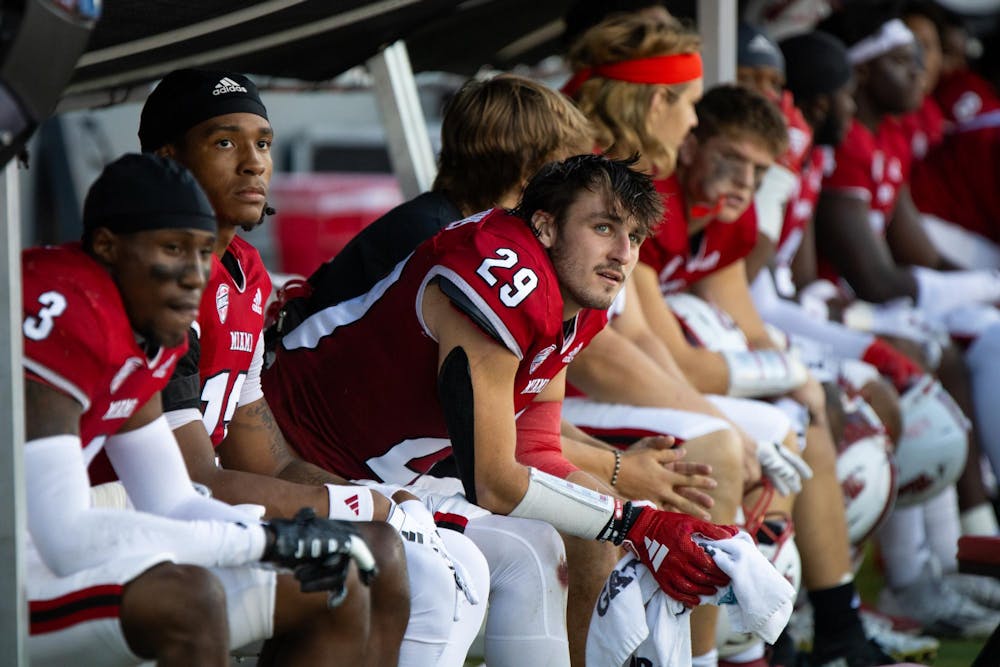On June 6, 2025, in Oakland, California, the battle over $2.8 billion finally came to a conclusion. Colleges can now officially pay their athletes directly.
Over 2,000 miles away at the Mid-American Conference (MAC) headquarters, change was not something anyone saw on the horizon. Although the House v. NCAA settlement did not target the MAC, its results will be felt throughout the college athletics world.
Athletes from the MAC have made a significant impact on their respective games. Players like Antonio Brown and J.J. Watt both got their start in the MAC, beginning their careers as walk-on players. Similarly, Heisman Trophy-winner Baker Mayfield, Cy Young Award-winner Shane Bieber and six-time NBA champion Scotty Pippen got their start walking on to their university’s athletic teams.
On June 6, however, the fate of the walk-on was put in jeopardy.
Prior to 2025, the NCAA model for athletics allowed for a certain number of scholarships per sport with an unlimited number of non-scholarship walk-ons. The $2.5 billion settlement will cap the size of team rosters. Any walk-ons part of the program before the 2026 season are allowed to keep their places for the next four years as well.
This settlement will forever affect the trajectory of college athletics and roster construction, as well as keep potentially game-changing athletes from continuing their athletic careers.
Not every walk-on story is Rudy Ruettiger’s, a career immortalized by a major motion picture; instead, it may lead to a college career highlighted by significant contributions to the team.
Away from the lights and cameras of Hollywood, Miami University's own Silas Walters is paving his own path. Although Walters received all-conference honors his senior year of high school at Lakota West, he did not receive any offers from Division I programs.
“It was always something I thought about,” Walters said. “I always wanted to play [football] at the highest level.”
Joining Miami as a walk-on in 2021, Walters didn’t make his debut until the following season. He played in 13 games for the RedHawks, receiving the John Scherz “Most Valuable Walk-On” Award.
Walters has continued to adapt his football skills for whatever the RedHawks ask of him, transitioning from a player who featured prominently on special teams to one of the marquee talents on the Miami defense.
“Starting from the very bottom has taught me a lot of real moral and life lessons, particularly hard work, dedication and consistency,” Walters said.
Enjoy what you're reading?
Signup for our newsletter
These lessons have served the thousands of walk-ons, like Walters, not just in football but through the rest of their lives.
Walters argued on behalf of the walk-on and the position’s impact.
"We've seen throughout history, plenty of walk-ons [who] have turned out to be incredible players,” Walters said. “Baker Mayfield was a walk-on who won the Heisman Trophy … There will always be those kids that went under the radar in high school who peak in the college game, and that is something people don't pay attention to.”
The NCAA’s rule changes will limit the number of student athletes who get a chance to demonstrate their skills at the highest level. Current walk-on defensive lineman Donovan Davis received offers from FCS schools, but yet chose Miami as an academic institution first, and as a football program second.”
Miami men’s basketball walk-on Blake Anderson echoed Davis’ sentiments.
“[Miami basketball] has allowed me to participate in Division I athletics and be involved with a school like Miami,” Anderson said. “So I thought it was the best of everything that I wanted out of my college experience.”
Davis and Anderson get an opportunity to prove themselves as a walk-on while prioritizing their education. Although the NCAA settlement does allow for players with limited recognition to utilize Division II and III, as well as the transfer portal, to improve upon a player’s recognition, this does restrict the players’ comfort in an academic environment, making the player choose between education and their sport.
Davis argues that in a game where players chase money, there are guys willing to come play football for free – so why get rid of it?
“It doesn't hurt anyone, so there is no value lost,” Davis said.
Although intramural sports have always been part of the college experience, the walk-on experience allows for players to compete at a regimented high level, ultimately with a chance to benefit a university athletic team at the varsity level.
At a Power Four institution, the football program will have the money as well as the interest to recruit and maintain 105 scholarship players on its roster, which will virtually eliminate the walk-on.
At a Group of Five school, such as Miami, although the roster limits 105 athletes, coaches can fill any empty spots on the roster with walk-ons. As head coach Chuck Martin noted, Miami could have a roster of 90 scholarship athletes and 15 walk-ons, which is considered legal by the NCAA’s restrictions.
Men’s basketball head coach Travis Steele has a similar position to Martin.
“In the past, we’ve been allowed 13 scholarships,” Steele said. “Now it's 15, but you can't keep 15 guys happy. Shoot, you can’t keep 13 guys happy. Everyone wants to play, so at Miami, walk-ons will still have a huge role.”
Steele still maintains an appreciation for the NCAA to ensure that walk-ons who were already established on the team are grandfathered in for the remainder of their eligibility.
“It's not their fault that the rules changed,” Steele said, “It's like you’re driving in a 55 and all of a sudden it changes to a 40. I’m still going 55 – I can't get pulled over for that.”
Ultimately, the fallout of the June 6 ruling will take years to assess fully, but starting next year, the entire NCAA will begin to feel the ripples. At Miami, it looks like the walk-on won’t entirely disappear; however, only time will tell the true effects on the game.




